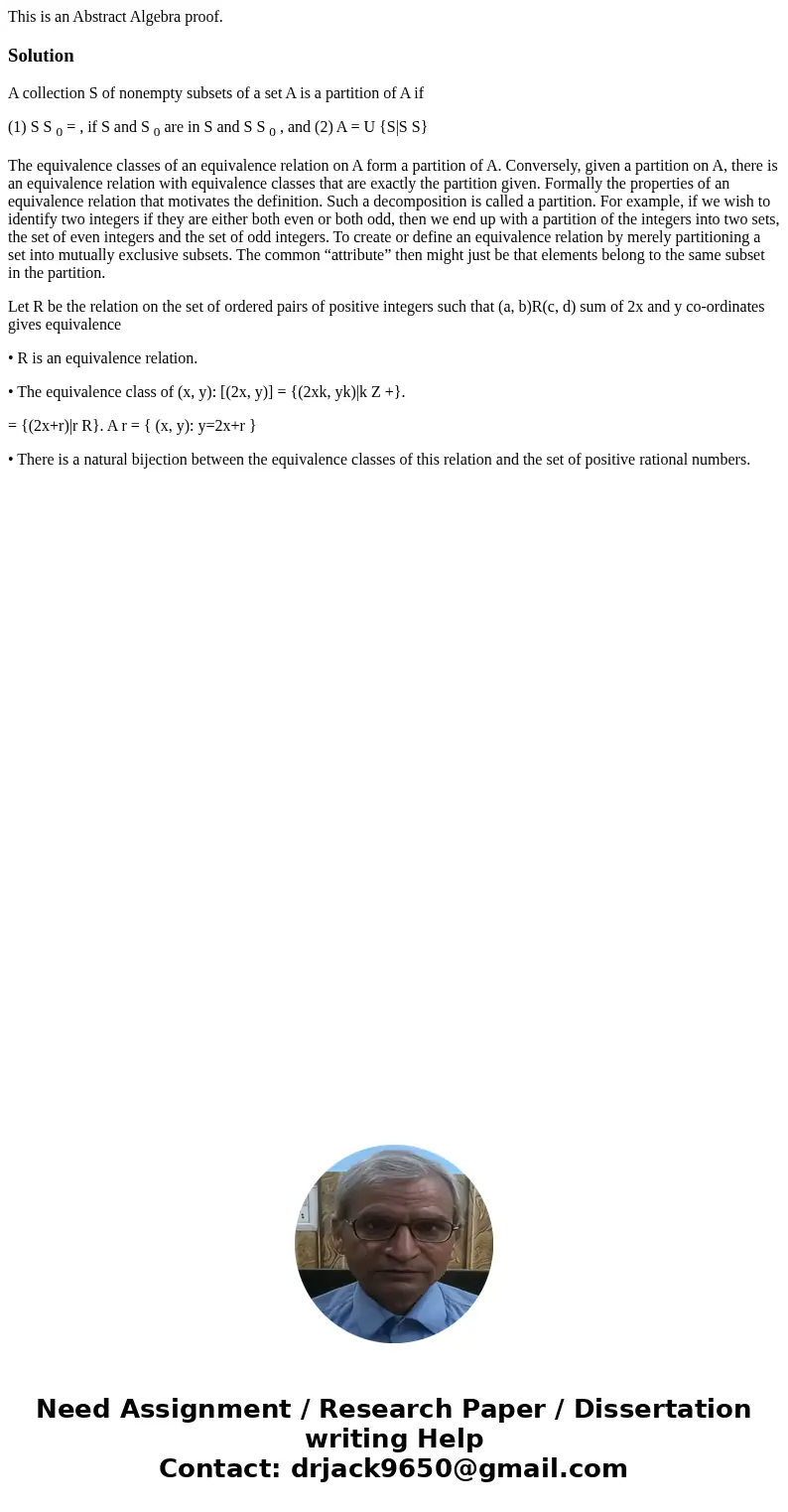This is an Abstract Algebra proofSolutionA collection S of n
This is an Abstract Algebra proof.
Solution
A collection S of nonempty subsets of a set A is a partition of A if
(1) S S 0 = , if S and S 0 are in S and S S 0 , and (2) A = U {S|S S}
The equivalence classes of an equivalence relation on A form a partition of A. Conversely, given a partition on A, there is an equivalence relation with equivalence classes that are exactly the partition given. Formally the properties of an equivalence relation that motivates the definition. Such a decomposition is called a partition. For example, if we wish to identify two integers if they are either both even or both odd, then we end up with a partition of the integers into two sets, the set of even integers and the set of odd integers. To create or define an equivalence relation by merely partitioning a set into mutually exclusive subsets. The common “attribute” then might just be that elements belong to the same subset in the partition.
Let R be the relation on the set of ordered pairs of positive integers such that (a, b)R(c, d) sum of 2x and y co-ordinates gives equivalence
• R is an equivalence relation.
• The equivalence class of (x, y): [(2x, y)] = {(2xk, yk)|k Z +}.
= {(2x+r)|r R}. A r = { (x, y): y=2x+r }
• There is a natural bijection between the equivalence classes of this relation and the set of positive rational numbers.

 Homework Sourse
Homework Sourse